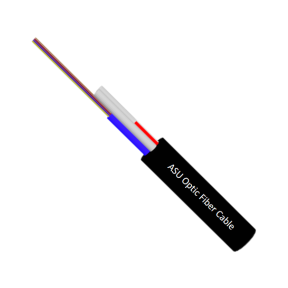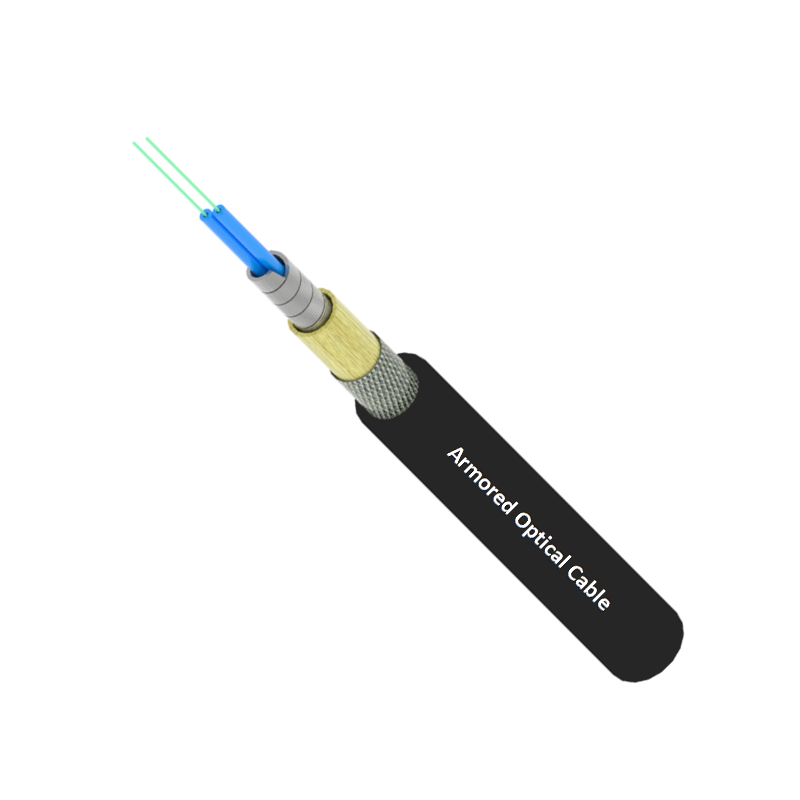Faser optic versus WiFi: Kern technologische verschillen
Hoe Faser Optic Gegevens Overdraagt Met Licht
Twijfelachtig is faser optic een van de meest relevante gegevensoverdrachts technologieën vanwege zijn benadering om lichtsignalen te gebruiken om hoge snelheid gegevens over te brengen met minimale verlies. In het hart van de technologie ligt het concept van 'totale inwendige reflectie', wat het mogelijk maakt dat licht efficiënt beweegt door faser optic kabels gemaakt van glas of plastic. Deze materialen helpen bij het overbrengen van lichtsignalen over lange afstanden zonder of met minimaal verlies. Voor faser optic communicatie, is het verschil tussen multimode vezel en single mode vezel essentieel om op te merken. Multimode vezels kunnen worden gebruikt voor relatief korte afstanden, zoals binnen een gebouw, terwijl single-mode vezels het beste geschikt zijn voor lange-afstand telecommunicatie en data communicatie infrastructuur.
WiFi's Radio Golven Communicatie Uitgelegd
Draadloze netwerken werken door gebruik te maken van radio golven in plaats van glasvezelkabels, wat ook van nature zo is. Maar dergelijke communicatie kan worden beïnvloed door andere elektronische apparatuur, muren en zelfs het weer. WiFi komt meestal in twee varianten voor: 2.4 GHz en 5 GHz. 2.4 GHz biedt een grotere dekking, maar is minder efficiënt in de snelheden van de 5 GHz-band als er meer storing is. Om nog hogere snelheden te bereiken, gebruiken nieuwere WiFi-technologieën verbeteringen zoals MIMO (Multiple Input Multiple Output) en gebruiken meerdere antennes om meer data tegelijkertijd te verzenden en te ontvangen. Dit is belangrijk voor het waarborgen van een sterke dekking, vooral in gebieden waar mogelijk verschillende gebruikers verbonden zijn met hetzelfde WiFi-netwerk.
Fysieke Infrastructuur: Kabels versus Draadloze Signalen
Vergelijken van de fysieke laag van glasvezel met draadloos: Het verschil tussen glasvezel en WiFi is duidelijk. Glasvezelsystemen omvatten een netwerk van kabels dat veel installatie vereist, met methoden zoals graven van greppels en leggen van kabels onder de grond, waardoor de installatie aanvankelijk kostbaarder en tijdrovender is. Daarentegen maakt WiFi gebruik van draadloze signalen, wat de implementatie ongelooflijk eenvoudig maakt, beperkt tot slechts de installatie van routers zonder enige fysieke kabling. Overweeg je de omstandigheden waarin je werkt bij het gebruik van glasvezel, als je rekening houdt met het volgende - glasvezel is praktisch onvernietigbaar en bestand tegen weer en andere milieuinvloeden, dankzij hun minder kwetsbare kabels tegen weersgerelateerde schade en signaalverlies. Wifi-netwerken kunnen daarentegen worden gestoord door obstakels en andere externe elektronica, en dit kan invloed hebben op de kwaliteit van het signaal.
Snelheidstest: De superieure bandbreedtecapaciteit van glasvezel
Gigabit Snelheden: Het Streamingvoordeel van Glasvezel
De glasvezeltechnologie biedt een snelheid van 1 Gbps, waardoor het ideaal is voor activiteiten die veel bandbreedte vereisen zoals gamen en streamen. Deze hoge snelheidslimiet stelt je in staat om onbeperkt te streamen en te gamen zonder onderbrekingen, zelfs wanneer meerdere apparaten verbonden zijn. Glasvezel biedt in totaal snelheden van tot twee gigabits per seconde, veel sneller dan WiFi. Bedrijven zoals Calix en ZTE Corporation hebben bijvoorbeeld een verbeterde prestatie geconstateerd in bandbreedte-intensieve toepassingen nadat ze waren overgeschakeld naar glasvezel. Dergelijke transities benadrukken de effectiviteit van glasvezel om aan de moderne technologische eisen te voldoen.
WiFi's Snelheidsbeperkingen in Drukte Omgevingen
De WiFi-doorvoer daalt sterk in drukke omstandigheden, omdat de beschikbare bandbreedte gedeeld moet worden, en fiber is doorgaans de beste optie in stedelijke gebieden om meer redenen dan alleen capaciteit, hoewel dat er een belangrijke is. Meerdere apparaten die verbinding maken met het WiFi-netwerk vertragen het, vooral als je in het kantoor bent of zelfs in openbaar gebied zoals cafés. Een studie heeft een afname van de beschikbare WiFi-bandbreedte van tot wel 50% vastgesteld wanneer een groep gebruikers tegelijkertijd inlogt. Dit is een belangrijke factor voor drukke ruimtes met hoge connectiviteitsbehoeften, omdat fiber constante snelheden kan bieden ongeacht hoeveel gebruikers er zijn.
Consistente prestaties over afstanden
Faser-optiek blijft over grotere afstanden hoge snelheid en betrouwbaarheid behouden zonder signaalverval zoals je bij WiFi etc. tegenkomt. Terwijl de WiFi-verbinding slechter wordt naarmate je verder weg gaat van je router, krijg je consistent Ethernet-prestaties over afstand en heb je het toegevoegde voordeel van Hot Swappable-capaciteit om je voorsprong over je gaming-tegenstanders te blijven vergroten! Normaal gesproken verzwakt WiFi na 100 voet, terwijl faser-optiek sterk blijft over kilometers. Dit verschil maakt dat vezels zo leuk zijn voor mensen die een schone, sterke signaal willen over vele meters.
Betrouwbaarheid vergeleken: Signal Stabiliteit Factoren
Immuuniteit tegen Elektrisch/RF-storen
Ze hebben een natuurlijke immuniteit tegen elektrische en radiogolven storingen, wat ze erg stabiel maakt in verbindingen onder verschillende radiocondities. Dit is een groot voordeel voor sectoren zoals gezondheidszorg en financiën, waarbij constante connectiviteit essentieel is voor het bedrijfsleven. Glasvezelnetwerken helpen ziekenhuizen in contact te blijven met medische dossiers en communicatiesystemen zonder downtime, wat door WiFi niet altijd gegarandeerd wordt, zegt hij. Onderzoek heeft aangetoond dat glasvezel betere uptime percentages biedt en minder wordt beïnvloed door storingen, waardoor de meeste bedrijven in gemengde omgevingen deze medium kiezen wanneer mogelijk.
WiFi's kwetsbaarheid voor obstakels: muren & apparaten
De prestaties van WiFi-signalen worden ook aanzienlijk verminderd door fysieke obstakels (bijvoorbeeld muren en huishoudelijke apparaten). De Perfecte WiFi Verlengster/Versterker Die Ook Door Een Betonnen Muur Heen Werkt (En Nee, Dat Is Niet Mogelijk) Volgens onderzoek kan een betonnen muur WiFi-signaal met 50 % of meer verzwakken en metalen apparaten/muren zullen alleen negatief interfereren met signaaloverdracht. Om dit te minimaliseren, moeten routers op goede, centrale plekken worden geplaatst, vrij van grote apparaten. Deze positieering kan signaaloverdracht verbeteren, de signaalkracht en dekking vergroten voor een betere connectiviteit.
Weerstand Tegen Weersomstandigheden in Netwerkverbindingen
Het weer kan ook een WiFi-verstoring veroorzaken, waardoor je verbinding offline gaat, of het nu regent of sneeuwt. Oceanische omstandigheden hebben geen invloed op glasvezelkabels en het netwerk blijft altijd actief. Mijn streamingservices, mijn werk vanaf afstand en alle andere internetgebruik vertragen tijdens stormachtig weer, behalve bij glasvezel. Inderdaad, verleden gegevens hebben aangetoond dat gebieden met uitdagende weersomstandigheden aanzienlijke verschillen in dienstbetrouwbaarheid ondervinden tussen WiFi en glasvezel, wat nogmaals aantoont de noodzaak van een sterkere infrastructuur om de service te handhaven.
Installatie- & Kostenoverwegingen
Uitdagingen bij de implementatie van glasvezelinfrastructuur
De implementatie van glasvezelinfrastructuur staat voor veel obstakels, zoals kosten en complexiteit. Glasvezelkabels zijn duur om te installeren, omdat ze arbeidsintensief zijn en speciale vaardigheden of machines vereisen, en de hoge installatiekosten dragen aanzienlijk bij aan de totale kosten. De materiaalkosten voor glasvezelmateriaal zijn ook hoog, wat de kosten verder opdrijft. Het installatieproces is zelfs tamelijk arbeidsintensief, waarbij weken en soms maanden nodig zijn, in tegenstelling tot de snellere implementatie van WiFi-netwerken. Bovendien zal het verkrijgen van right-of-way-vergunningen en het naleven van de voorschriften de kosten verhogen en de introductie vertragen. Het is een kwestie van balanceren, en bedrijven die overwegen glasvezel te implementeren, moeten deze factoren in gedachten houden.
WiFi's Plug-and-Play Gemak
Bij het opbouwen van WiFi-netwerken is de eenvoud van installatie een belangrijke voordelen. WiFi-systemen zijn in principe plug-and-play, zodat bedrijven direct verbonden kunnen zijn zonder zich te hoeven bezighouden met ingewikkelde installaties. De kosten voor Wi-Fi-installaties zijn lager, wat aankomt op de kosten voor routers en toegangspunten. De kosteneffectieve aard van WiFi maakt het een aantrekkelijk optie voor kleine bedrijven in het bijzonder. Deze bedrijven vertellen vaak verhalen over hoe ze van begin af aan van start kunnen gaan zonder zich te hoeven bekommeren om installatieproblemen. Daarom is WiFi aantrekkelijk vanwege zijn algemeenheid en eenvoud van gebruik.
Langtermijnwaarde van vezelinvesteringen
Ook al is het aanvankelijk duurder, investeren in Glasvezeltechnologie blijft op de lange termijn uitkomen. Glasvezelnetwerken vereisen doorgaans minder onderhoud vanwege de robuustheid van de kabels en vereisen daarom weinig reparaties. Het is bewezen dat bedrijven die glasvezel-tot-de-locatie gebruiken aanzienlijke operationele besparingen zien door minder downtime en een efficiëntere operatie. Glasvezel is sexy omdat het de eigenschap heeft om de pandwaarde te verhogen, wat iets is waar verhuurders en ondernemers graag naar luisteren. De extra connectiviteit die glasvezel biedt kan vooral nuttig zijn voor bedrijven die een betrouwbare internetservice nodig hebben. Glasvezel is dus een duur investment op korte termijn, maar biedt langdurige voordelen.
Bedrijfstoepassingen & Toekomstbestendig
Enterprise-niveau netwerk eisen
Momenteel, als er voldaan moet worden aan hoge bedrijfsvereisten voor toepassingen die een sterke en stabiele verbinding vereisen, speelt Fiber Optics een belangrijke rol. Dit omvat toepassingen met zware gegevensverwerking, rampenherstel en missionkritieke diensten, en een uitstekend apparaatenecosystem dat loopt van IoT-apparaten tot workstations en Azure Stack-systemen, alles vereist een robuuste verbinding. Bijvoorbeeld, bedrijven zoals telecomproviders en bankorganisaties migreren naar fiber, omdat het een stabiele, hoge snelheid en lage latentieverbinding biedt. Fiber netwerken bieden de infrastructuur die nodig is om IoT-apparaten te ondersteunen die steeds cruciaal zijn voor real-time gegevensverwerking en operationele efficiëntie.

potentieel voor 5G-integratie
Opvallend is de interactie tussen de Glasvezelverbinding en het binnenkort aanwezige 5G-netwerk. Met gaande 5G implementaties, is de behoefte aan robuuste backhaul-connectiviteit essentieel voor ononderbroken prestaties, wat de belangrijkheid van glasvezel in de netwerkupgrade verhoogt. Cijfers tonen aan dat er ook aanzienlijke vooruitgangen zijn geboekt in andere soorten infrastructuur met betrekking tot glasvezel, wat een soepeler 5G-implementatie mogelijk kan maken. Bijvoorbeeld, de convergentie van glasvezel en 5G brengt de voordelen van hoge snelheid en lage vertraging van 5G op een efficiënte manier naar eindgebruikers. Industie-analisten bieden deskundig advies dat hoge-snelheid glasvezel een cruciale factor zal zijn om de volgende generatie mobiele technologieën te ondersteunen door zijn betrouwbaarheid en schaalbaarheid.
Schaalbaarheid voor opkomende technologieën
Faser optic netwerken hebben ook ongeëvenaarde schaalbaarheid en ondersteunen technologieën zoals AI en de cloud. Bedrijven die hun voetprint hebben uitgebreid met schaalbare vezeloplossingen, merken dat dit heeft geleid tot verbeterde diensten en bedrijfsgroei. Bijvoorbeeld, technologiebedrijven in regio's zoals Azië-Pacific gebruiken vezel om digitale transformatieprogramma's te ondersteunen die operationele efficiëntie en connectiviteit verbeteren. Voorspellingen voor de markt suggereren dat de komende vijf jaar continued, enorme groei zal brengen voor vezelinfrastructuur, en laten zien hoe essentieel het is voor toekomstige technologische vooruitgang. De sterkte, snelheid en flexibiliteit van vezelnetwerken maken het een natuurlijke keuze voor groeiende bedrijven.
Veelgestelde vragen
Wat zijn de belangrijkste verschillen tussen faser optic en WiFi-gegevensoverdracht?
Faser-optiek maakt gebruik van lichtsignalen om gegevens te verzenden, wat hoge snelheden met minimale verliezen ondersteunt, terwijl WiFi afhankelijk is van radio golven, die gevoelig kunnen zijn voor storingen door andere elektronica en obstakels.
Hoe ondersteunt faser-optische technologie hoge snelheden?
Faser-optiek maakt gigabit snelheden mogelijk dankzij de efficiënte overdracht van lichtsignalen over lange afstanden, waardoor ze ideaal zijn voor bandbreedte-intensieve taken zoals streamen en gamen.
Waarom wordt WiFi-installatie als eenvoudiger beschouwd dan faser-optiek?
WiFi-systemen zijn plug-and-play en vereisen alleen routers voor instelling, terwijl faser-optiek uitgebreide kabelinstallatie vereist, wat de initiële installatie kostbaarder en tijdrovender maakt.
Kan faser-optiek de waarde van een eigendom verhogen?
Ja, het installeren van faser kan de eigendoms-waarde verhogen en biedt langdurige besparingen door zijn robuuste aard en betrouwbare prestaties, waardoor het een wijs investeringskeuze is voor verhuurders en ondernemers.
Is faser-optische infrastructuur klaar voor toekomstige technologieën zoals 5G?
Absoluut, glasvezel is cruciaal voor de uitrol van 5G-netwerken vanwege hun betrouwbaarheid en schaalbaarheid, en biedt de noodzakelijke infrastructuur voor geavanceerde mobiele technologieën.
Inhoud
- Faser optic versus WiFi: Kern technologische verschillen
- Snelheidstest: De superieure bandbreedtecapaciteit van glasvezel
- Betrouwbaarheid vergeleken: Signal Stabiliteit Factoren
- Installatie- & Kostenoverwegingen
- Bedrijfstoepassingen & Toekomstbestendig
-
Veelgestelde vragen
- Wat zijn de belangrijkste verschillen tussen faser optic en WiFi-gegevensoverdracht?
- Hoe ondersteunt faser-optische technologie hoge snelheden?
- Waarom wordt WiFi-installatie als eenvoudiger beschouwd dan faser-optiek?
- Kan faser-optiek de waarde van een eigendom verhogen?
- Is faser-optische infrastructuur klaar voor toekomstige technologieën zoals 5G?

